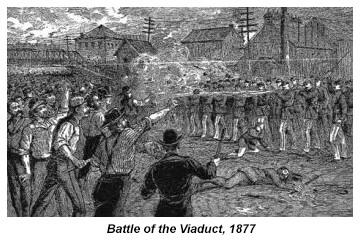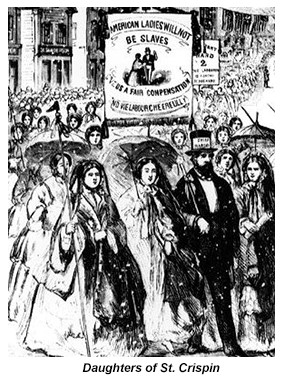July 24
The United Auto Workers and the Teamsters form the Alliance for Labor Action (ALA), later to be joined by several smaller unions. The ALA’s agenda included support of the civil rights movement and opposition to the war in Vietnam. It disbanded after four years following the death of UAW President Walter Reuther – 1968
 (All Labor Has Dignity: People forget that Dr. King was every bit as committed to economic justice as he was to ending racial segregation. He fought throughout his life to connect the labor and civil rights movements, envisioning them as twin pillars for social reform.) (All Labor Has Dignity: People forget that Dr. King was every bit as committed to economic justice as he was to ending racial segregation. He fought throughout his life to connect the labor and civil rights movements, envisioning them as twin pillars for social reform.)
The U.S. minimum wage increased to $6.55 per hour today. The original minimum, set in 1938 by the Fair Labor Standards Act, was 25¢ per hour – 2008
U.S. minimum wage rose to $7.25 per hour, up from $6.55 – 2009
July 25
Workers stage a general strike—believed to be the nation’s first—in St. Louis, in support of striking railroad workers. The successful strike was ended when some 3,000 federal troops and 5,000 deputized special police killed at least eighteen people in skirmishes around the city – 1877
New York garment workers win closed shop and firing of scabs after 7-month strike – 1890
 (No Contract, No Peace: A Legal Guide to Contract Campaigns, Strikes, and Lockouts: This book is a must-have for any union or activist considering aggressive action to combat management’s growing economic war against workers. No Contract, No Peace! references recent union activities and NLRB decisions that have affected the labor relations environment. Schwartz’s familiarity with labor and employment law combines with his activist spirit to provide innovative yet practical tips for mounting and maintaining meaningful campaigns designed to build union and workers’ power.) (No Contract, No Peace: A Legal Guide to Contract Campaigns, Strikes, and Lockouts: This book is a must-have for any union or activist considering aggressive action to combat management’s growing economic war against workers. No Contract, No Peace! references recent union activities and NLRB decisions that have affected the labor relations environment. Schwartz’s familiarity with labor and employment law combines with his activist spirit to provide innovative yet practical tips for mounting and maintaining meaningful campaigns designed to build union and workers’ power.)
 Fifteen “living dead women” testify before the Illinois Industrial Commission. They were “Radium Girls,” women who died prematurely after working at clock and watch factories, where they were told to wet small paintbrushes in their mouths so they could dip them in radium to paint dials. A Geiger counter passed over graves in a cemetery near Ottawa, Illinois still registers the presence of radium – 1937 Fifteen “living dead women” testify before the Illinois Industrial Commission. They were “Radium Girls,” women who died prematurely after working at clock and watch factories, where they were told to wet small paintbrushes in their mouths so they could dip them in radium to paint dials. A Geiger counter passed over graves in a cemetery near Ottawa, Illinois still registers the presence of radium – 1937
The Teamsters and Service Employees unions break from the AFL-CIO during the federation’s 50th convention to begin the Change to Win coalition, ultimately comprised of seven unions (4 by 2011: SEIU, Teamsters, UFCW and the UFW). They say they want more emphasis on organizing and less on electoral politics – 2005
July 26
 In Chicago, 30 workers are killed by federal troops, more than 100 wounded at the “Battle of the Viaduct” during the Great Railroad Strike – 1877 In Chicago, 30 workers are killed by federal troops, more than 100 wounded at the “Battle of the Viaduct” during the Great Railroad Strike – 1877
President Grover Cleveland appoints a United States Strike Committee to investigate the causes of the Pullman strike and the subsequent strike by the American Railway Union. Later that year the commission issues its report, absolving the strikers and blaming Pullman and the railroads for the conflict – 1894
Battle of Mucklow, W.Va., in coal strike. An estimated 100,000 shots were fired; 12 miners and four guards were killed – 1912
President Truman issues Executive Order 9981, directing equality of opportunity in armed forces – 1948

The Americans With Disabilities Act (ADA) took effect today. It requires employers to offer reasonable accommodations to qualified employees with disabilities and bans discrimination against such workers – 1992
July 27
William Sylvis, founder of the National Labor Union, died – 1869
July 28

Women shoemakers in Lynn, Mass., create Daughters of St. Crispin, demand pay equal to that of men – 1869
Harry Bridges is born in Australia. He came to America as a sailor at age 19 and went on to help form and lead the militant Int’l Longshore and Warehouse Union for more than 40 years – 1901
A strike by Paterson, N.J., silk workers for an 8-hour day, improved working conditions ends after six months, with the workers’ demands unmet. During the course of the strike, approximately 1,800 strikers were arrested, including Wobbly leaders Big Bill Haywood and Elizabeth Gurley Flynn – 1913
Federal troops burn the shantytown built near the U.S. Capitol by thousands of unemployed WWI veterans, camping there to demand a bonus they had been promised but never received – 1932
Nine miners are rescued in Sommerset, Pa., after being trapped for 77 hours 240 feet underground in the flooded Quecreek Mine – 2002
July 29
The Coast Seamen’s Union merges with the Steamship Sailors’ Union to form the Sailors’ Union of the Pacific – 1891
 A preliminary delegation from Mother Jones’ March of the Mill Children from Philadelphia to President Theodore Roosevelt’s summer home in Oyster Bay, Long Island, publicizing the harsh conditions of child labor, arrives today. They are not allowed through the gates – 1903 A preliminary delegation from Mother Jones’ March of the Mill Children from Philadelphia to President Theodore Roosevelt’s summer home in Oyster Bay, Long Island, publicizing the harsh conditions of child labor, arrives today. They are not allowed through the gates – 1903
(The Autobiography of Mother Jones: Mary Harris Jones—“Mother Jones”—was the most dynamic woman ever to grace the American labor movement. Employers and politicians called her “the most dangerous woman in America” and rebellious working men and women loved her as they never loved anyone else.)
Nineteen firefighters die while responding to a blaze at the Shamrock Oil and Gas Corp. refinery in Sun Ray, Texas – 1956
 Following a 5-year table grape boycott, Delano-area growers file into the United Farm Workers union hall in Delano, Calif., to sign their first union contracts – 1970 Following a 5-year table grape boycott, Delano-area growers file into the United Farm Workers union hall in Delano, Calif., to sign their first union contracts – 1970
July 30
President Lyndon Johnson signs the Social Security Act of 1965, establishing Medicare and Medicaid – 1965
Former Teamsters President Jimmy Hoffa disappears. Declared legally dead in 1982, his body has never been found – 1975
United Airlines agrees to offer domestic-partner benefits to employees and retirees worldwide – 1999
—Compiled and edited by David Prosten |